Kitchen Garden Planning, Part One: Designing a Pretty & Productive Potager
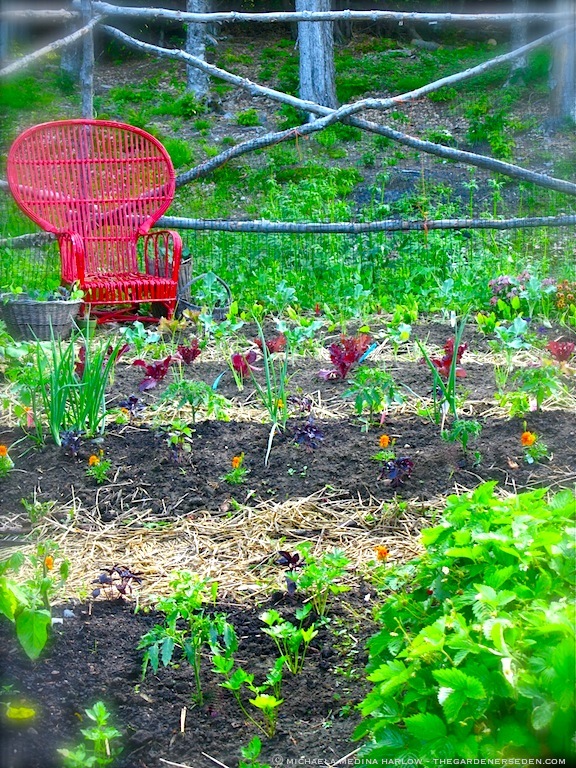 Â I like to design kitchen gardens with both beauty & bounty in mind. Why does beauty matter in a vegetable garden? I’ve noticed that the prettier the garden, the more time I want to spend in it. Usually, the more time you spend in your potager, the more time you spend on your plants and the better they produce
 I like to design kitchen gardens with both beauty & bounty in mind. Why does beauty matter in a vegetable garden? I’ve noticed that the prettier the garden, the more time I want to spend in it. Usually, the more time you spend in your potager, the more time you spend on your plants and the better they produce
There’s still snow in my vegetable garden, but with sunny days and drying wind, it’s melting quickly. I try to stay in the moment and enjoy the season as it unfolds. But I must confess that I can hardly wait to get back into my garden and sink my hands down into the rich, dark, fragrant earth. April through late November, I spend a great deal of time working in my kitchen garden. So, I’ve made the space welcoming and comfortable by adding room to relax; placing comfortable chairs here and there, and conveniently positioning a table to set down my coffee cup or indulge in a late afternoon snack. In fact, I treat my edible garden as I would any other outdoor room; enclosing the cozy space with a rustic, sapling fence and decorating with hand-woven teepees for climbers, pots for edible flowers and wicker baskets for weeding. I can’t imagine a more pleasant place  to spend my weekend hours. Tending the beds in my pretty potager never feels like a chore.
I’ll be talking more about kitchen garden design next Saturday (April 13th – 10am with Jack Manix), at Walker Farm’s first spring seminar, The Art and Science of Vegetable Gardening. For those of you too far away to attend this free event, I will be posting notes on the topic of edible gardens both before and after the seminar. Whether you grow a few pots of veggies on your terrace or have an entire acre devoted to culinary delights, there’s nothing more important to your success than properly planning and regularly tending your garden.
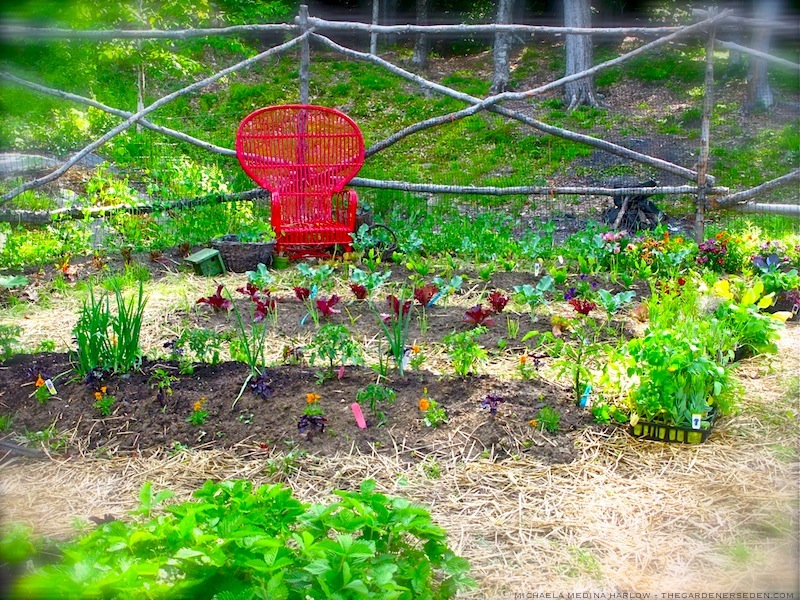 Â A handmade sapling fence is pretty to look, but it’s also practical for growing vertical produce like peas, melons, cucumbers. A tall fence also keeps out the white tailed deer, and green, coated chicken wire —extending from lower bar, below ground level— keeps out rabbits and burrowing rodents. The paths of my garden were lined with a weed-barrier of old cardboard and rug scraps. Of course no one ever notices my thrifty recycling with the pretty top layer of golden straw mulch.
 A handmade sapling fence is pretty to look, but it’s also practical for growing vertical produce like peas, melons, cucumbers. A tall fence also keeps out the white tailed deer, and green, coated chicken wire —extending from lower bar, below ground level— keeps out rabbits and burrowing rodents. The paths of my garden were lined with a weed-barrier of old cardboard and rug scraps. Of course no one ever notices my thrifty recycling with the pretty top layer of golden straw mulch.
While there are individual crops suited to a wide variety of situations, most vegetables prefer full sun, good soil, excellent drainage and room to grow. Choose your vegetable garden’s site accordingly. Shady yard? Consider growing leafy greens and herbs suited to filtered sunlight and head to the farmer’s market for your tomatoes. Poor soil or water-logged location? Raised beds or containers are the simplest solution. In fact raised beds —either natural, earthen mounds where drainage is good or constructed soil retainers built from rot-resistant wood or stone where it isn’t— are my preferred planting style for vegetable gardening in any location. The soil in raised beds tends to warm up faster in my cold climate and I like wide, deep beds —enriched with well-rotted manure and/or homemade compost— for growing a wide variety of crops. Always test your soil’s pH as well as N,P,K and amend accordingly with organic supplements. Read more about basic soil testing here.
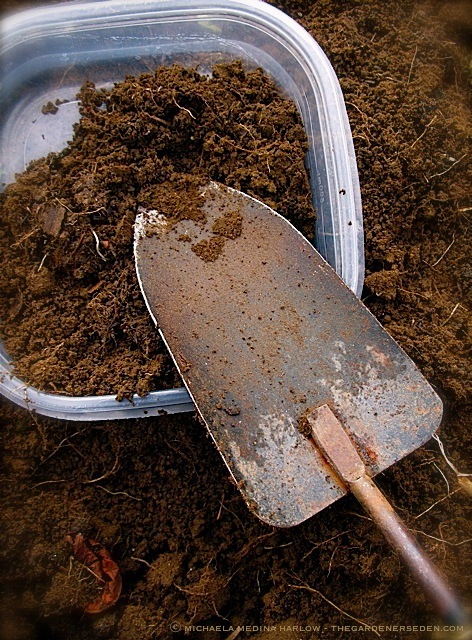 Â Testing your soil with a kit is quick and easy, and I recommend you do it at least once a year. Click here for details. If you think you need more information, you can send soil samples out to your local university extension service for more detailed analysis.
 Testing your soil with a kit is quick and easy, and I recommend you do it at least once a year. Click here for details. If you think you need more information, you can send soil samples out to your local university extension service for more detailed analysis.
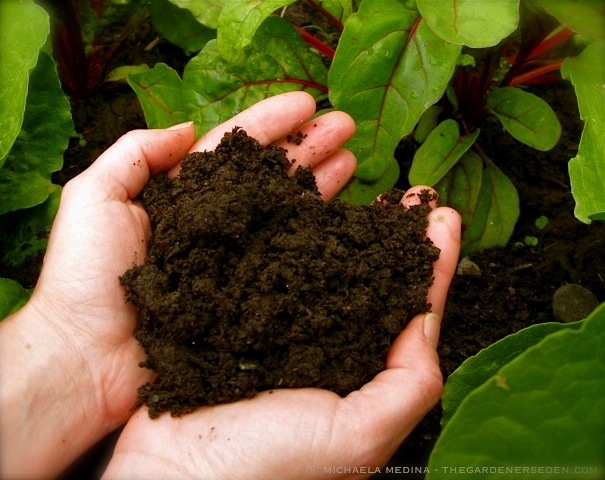 Â Making and using your own compost from kitchen scraps, lawn clippings and other organic debris is one of the easiest ways to improve garden soil. New to composting? You don’t need to spend a fortune on bins and tumblers, click here and travel back to my previous post on composting basics to learn or review the simple steps.
 Making and using your own compost from kitchen scraps, lawn clippings and other organic debris is one of the easiest ways to improve garden soil. New to composting? You don’t need to spend a fortune on bins and tumblers, click here and travel back to my previous post on composting basics to learn or review the simple steps.
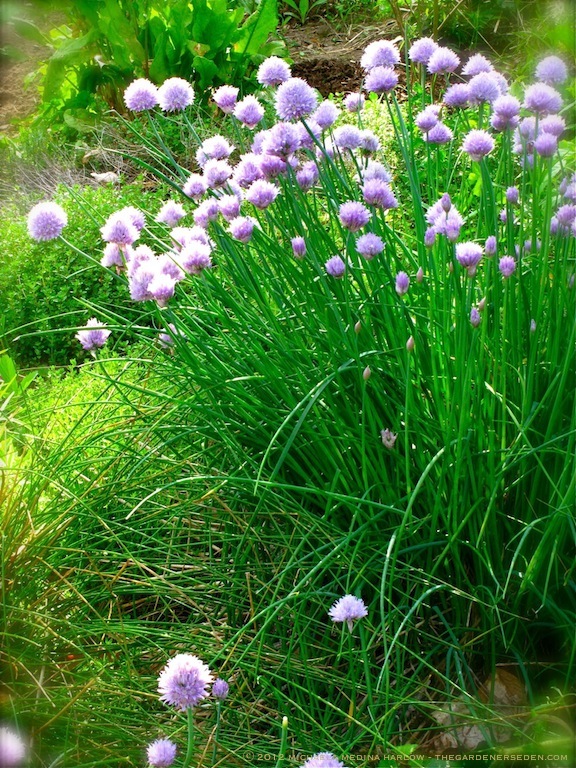 Â Flowers are attractive to beneficial birds and insects, as well as to our own eyes. Draw pollinators into your garden by adding flowering plants to your potager. If you grow edible blossoms, you’ll be able to enjoy both the sight and the taste of your blooms. Learn more about edible flowers in my previous post, here.
 Flowers are attractive to beneficial birds and insects, as well as to our own eyes. Draw pollinators into your garden by adding flowering plants to your potager. If you grow edible blossoms, you’ll be able to enjoy both the sight and the taste of your blooms. Learn more about edible flowers in my previous post, here.
In addition to providing room-to-grow, wide beds provide extra growing space for pretty edging plants like herbs, edible flowers and tiny, alpine strawberries. More than merely decorative, herbs and edible flowers make great companion plants; attracting beneficial insects like bees and butterflies, and deterring or distracting a few of the less-than-desirables. I like to include annual flowers for cutting in my vegetable garden, where I can easily harvest a bunch for the dinner table while collecting produce.
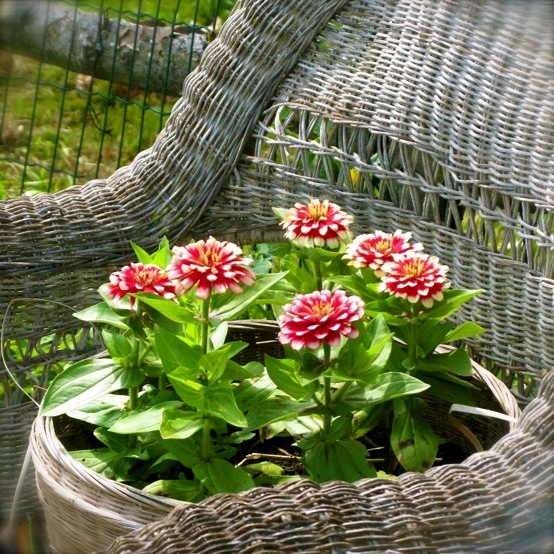 Â Zinnia, planted in a wicker basket, decorate an old, worn-out garden chair in the corner of my potager
 Zinnia, planted in a wicker basket, decorate an old, worn-out garden chair in the corner of my potager
No room to plant flowers in your vegetable garden beds? Consider scattering flower pots here and there at the ends of rows, the edges of pathways, or hang them from your garden fence or balcony rail with hooks. Drawing bees, hummingbirds and other pollinators to your garden will help your garden and the environment. If you grow edible blossoms, you’ll be able to enjoy both the sight and the taste of your blooms, but be sure to do your research before consuming any flower, as some are quite toxic. A few particularly colorful and safely edible additions for small spaces include pansies, marigold, nasturtiums and chives. Read more about edible flowers in my previous post, here.
 I love the flavor of homegrown potatoes, so I plant a pound or two of many different varieties; trying new introductions and long-forgotten favorites each year. This method allows me to have potatoes of all shapes, colors and sizes throughout the season while also providing a fall crop for root cellaring. Consider how you will use your produce —immediately, for storage or both— before you plan your garden and order your seed or shop for vegetable starts. Planting too many vegetables leads to over-crowding and smaller yields. Read more about potato varieties here.
I love the flavor of homegrown potatoes, so I plant a pound or two of many different varieties; trying new introductions and long-forgotten favorites each year. This method allows me to have potatoes of all shapes, colors and sizes throughout the season while also providing a fall crop for root cellaring. Consider how you will use your produce —immediately, for storage or both— before you plan your garden and order your seed or shop for vegetable starts. Planting too many vegetables leads to over-crowding and smaller yields. Read more about potato varieties here.
Before the gardening season moves into full swing, I like to consult last season’s journal before I layout this season’s planting plan on grid paper. Crop rotation in vegetable gardens helps to deter pests and diseases and can help to build and protect your soil. I avoid planting the same vegetables —or those within the same groups; such as those in the tomato family like eggplant, pepper, tomatillo and potato— in the same beds year after year. When rotating crops and planning this season’s garden, consider the plant family, height (for sun and shade considerations) and the nutrient demands of each crop. Avoid planting your tomatoes in the shade of cornstalks and in order to prolong the fertility of your soil, avoid planting heavy feeder crops —such as brassicas and tomatoes— in the same position year after year. Rotate crops that require high fertility with legumes —such as peas and beans— or light feeders such as herbs and potatoes, or other root vegetables. If you are building a smaller garden this year, and a vegetable bed or two fall out of use for a season, try to plant a green manure cover crop like buckwheat, alfalfa or winter rye to help build the soil and keep down weeds. You can turn the green manure crop over with a hoe and replant the space with veggies or flowers next year.
 Â Keeping a record of my kitchen garden is more than just an excuse to buy a pretty, handmade journal. Taking notes on successes and failures as well as the position of various crops, provides essential information for my planting plan in following years. Read more about garden journaling here.
 Keeping a record of my kitchen garden is more than just an excuse to buy a pretty, handmade journal. Taking notes on successes and failures as well as the position of various crops, provides essential information for my planting plan in following years. Read more about garden journaling here.
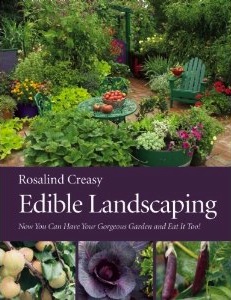 To find out more about Rosalind Creasy’s Edible Landscaping or purchase a copy, click here
To find out more about Rosalind Creasy’s Edible Landscaping or purchase a copy, click here
In addition to the regular posts you will find here on the topic of potager design and planning, I have a few beautiful and inspirational books on edible gardening to recommend. Rosalind Creasy’s Edible Landscaping (pictured above) is a great book, just chock full of gorgeous garden design photos and practical, inspirational ideas. I mentioned it in this post (here), and I still highly recommend it. And Jennifer Bartley, author of one of my favorite potager design books, Designing the New Kitchen Garden, recently released another beautiful and informative title, The Kitchen Gardener’s Handbook, from Timber Press. If you are looking for inspiration, these titles will really get you going!
 Jennifer Bartley’s The Kitchen Gardener’s Handbook
Jennifer Bartley’s The Kitchen Gardener’s Handbook
I’ll be writing much more about creating enchanting edible gardens in the coming weeks. And, if beautiful and productive vegetable gardens appeal to your senses, you may want to revisit my potager page at the left (click here) and past-posts; including The Art of French Vegetable Gardening (click here) and Dreaming of Springtime’s Sweet Veggies: Planning a Lush, Welcoming Potager.
Photography and Text â“’ Michaela Medina Harlow/The Gardener’s Eden. All images, articles and content on this site (with noted exceptions), are the original, copyrighted property of The Gardener’s Eden and may not be reposted, reproduced or used in any way without prior written consent. Contact information is in the left side bar. Please do not take my photographs without asking first. Thank you!Â
Do you enjoy The Gardener’s Eden? You can help support this site by shopping through affiliate links. A small percentage of each sale will be paid to this site, helping to cover web hosting and maintenance costs. Thank you so much for your support!
12 Replies to “Kitchen Garden Planning, Part One: Designing a Pretty & Productive Potager”
Comments are closed.

Michaela, We have a bid in on a place in the mountains. IF we get it, it is apparently a hot spot for deer! How tall are your fences to keep the deer out of your potager?
I always love your posts, but especially the ones on your potager. I learn so much!
Hi Lynda, Wow. Good luck landing your property! To effectively keep deer out of a garden, I recommend an 8′ minimum height. Although you will note that I have a top bar across my fence, I actually don’t recommend that for a deer-proof fence (Oli, my dog is my main deer deterrent). If you make the top of the fence less certain —particularly with something moving— deer are spooked by it. So for deer-riddled areas, I recommend stringing wire across the top with something reflective attached (like metallic ribbon, etc). The deer will be less certain of jumping if there isn’t a clear visual line and when they see the movement on the top of the wire, it will distract them. Some experts recommend going as high as 10-12′ with height variation. I will say that 8′ has worked here and for my clients, but almost all have dogs.
Again, good luck with your bid. And as always, thank you for your comments and kind words about the blog! xo M
Hello to you both, my friends! (Fancy meeting you here Lynda. The bees still home, I hope?; )
Oh M, still waiting for my intrepid chives to appear between the sidewalk pavers *sigh*, but meantime, your photos are just the ticket for the winter-weary. We finally made it into double digit temps today (+10C is just a hair below 50F) but the thermometer’s finding it too difficult for the next few days… *sigh* Maybe next week?
Michaela, we got our mountain home, so I guess I will be building that fencing sometime soon! Thank you for your advice! xo L
PS: Strangely, I always check the “Notify me of follow-up comments by email” box, but I never get the notifications.
OMG Lynda, this is fantastic news! (Maybe she had more say in the matter than you thought; )
CONGRATULATIONS!! Hugs, Deb: )
Congratulations, Lynda! What a great new adventure. I’m so happy for you :) xo M
p.s. Not sure of what could be going on with follow up comments. It could be that the plugin needs an update. I’ll check. Thanks for letting me know! M
Hi Deb, I didn’t realize that Lynda and you are acquainted. What a lovely coincidence. Things are warming up here now (what a relief), and I hope spring is being kind to our dear neighbors to the north. xo M
Yes, thank you Michaela, I think (knock wood; ) that Spring has finally arrived. We’re to get rain right through Friday and the temps are staying above the freezing mark, but April has been abnormally cold this year.
And yes, we are acquainted; indeed, we met right here! Did you know that your New Year’s post (with the sparkler twinkling with such a rosy, cheerful glow) was the first blog that I’d ever read? Your garden is such a lovely, welcoming place; with encouraging warmth and friendship to all who enter. Thank you my friend – my life changed forever on that day: )
Such kind and beautiful thoughts, Deb. And as always, so wonderfully expressed. Thank you so much. The Gardener’s Eden is four years old this month, and I am so glad to have discovered so many incredible people here. Thank you for visiting, reading, commenting and offering your wisdom. Together I think we all make the world a smaller, and better place. xo M
Happy 4th anniversary M! (You are too kind.)
A smaller world IS better (so much easier to love your neighbour: )
Michaela, I made a discovery today. Apparently, when I sign up I am supposed to get an email from your system asking me to verify that I want the subscription.
Next time I sign up for a comment I will go to AT&T’s online spam filter and look to see if you were blocked. :(
Hi Lynda, Yes. That exists to prevent unwanted auto sign ups, etc. I’ve had some trouble with this site lately, but superman Tim seems to have saved the day! ;) M